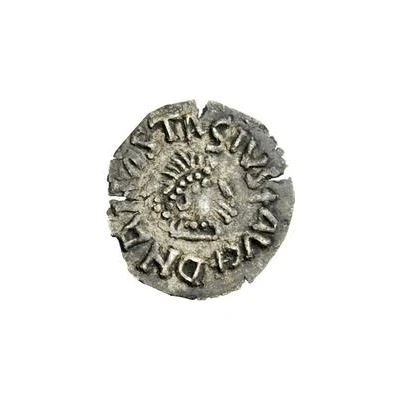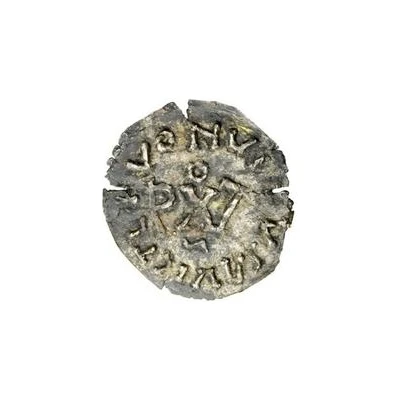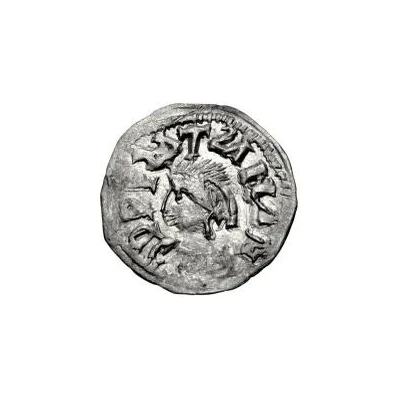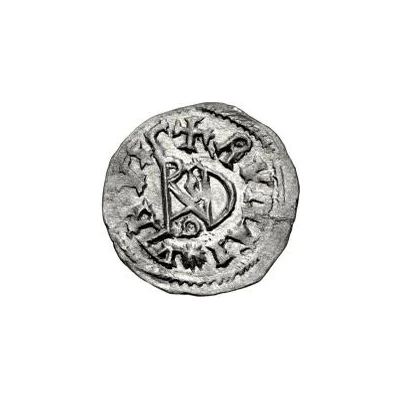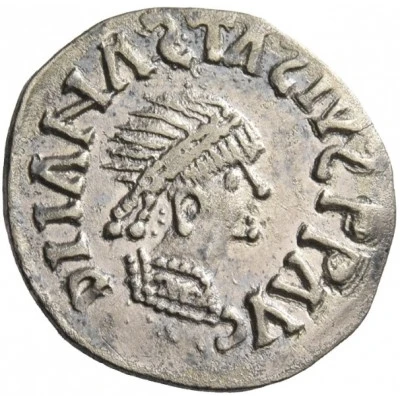
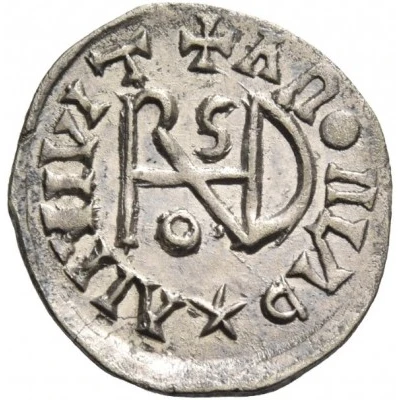

© Numismatica Ars Classica NAC AG
¼ Siliqua In the name of Anastasius I and Theoderic; Sirmium; regular S with angled bust
| Silver | 0.81 g | 14.5 mm |
| Issuer | Gepid Kingdom |
|---|---|
| Type | Standard circulation coin |
| Years | 493-526 |
| Value | ¼ Siliqua |
| Currency | Siliqua (491-567) |
| Composition | Silver |
| Weight | 0.81 g |
| Diameter | 14.5 mm |
| Shape | Round (irregular) |
| Technique | Hammered |
| Demonetized | Yes |
| Updated | 2024-10-09 |
| Numista | N#144414 |
|---|---|
| Rarity index | 93% |
Reverse
Monogram of Theoderic with cross above and surrounded by legend.
Script: Latin
Lettering: AINVIVT - A ROMAD
Translation:
Invicta Roma
Unconquered Rome
Edge
Plain
Comment
While the types struck in the name of Anastasius I (491-518) and Theoderic (475-526) were originally attributed to the Gepids, they were later proposed to be issues of the Ostrogoths, which became a widely-accepted theory. Even so, with the weights of these issues not matching the Ostrogothic weight standard set by Theoderic, and with the stylistic depictions matching Gepid issues struck in the name of other rulers, Metlich concluded that all these types are, in fact, issues of the Gepids, which many auction houses are in agreement with.The exact lettering of the surrounding legend may vary.
No date:
1) D I ANASTASIIS P AV / VINPICT - G VAOMANV
2) D II ANASTASIVS PP AVG / AINVIVT - A ROMAD
3) D II ANASTASIVS PP AVG / AIIVIVIT - A NIIADM
4) D II ANASTASIVS PP AVC / INVICT - A RVMANA
5) D N ANASTASIVS PR P AVC / AIMVIC - A ROMAP
6) D N ANASTASIVS PR P AVC / AIMVIC - A RVMAN
7) D N ANASTASIVS PP AVC / MINVIA - A ROMAD
8) D N ANASTASIVS PP AVC / NINVIT - A ROMA
9) D N ANASTASIVS PP AV / VINVICT - A ROMANI
10) D N ANASTASIVS P AVC / VINVICT - A ROMAN
11) D N ANVSIATS PP AVC / VINVITA - ROMAN
12) D N INASTASVS PP AV / VINVICT – A ROMANI
Another example:
© Diemguarns
Interesting fact
One interesting fact about this coin is that it features a unique blend of Roman and barbarian influences in its design. The coin's obverse (front) side features the bust of Emperor Anastasius I, while the reverse (back) side features the bust of Theoderic, the King of the Gepids, a Germanic tribe that lived in what is now modern-day Hungary. This blending of Roman and barbarian styles reflects the complex political and cultural dynamics of the time, when the Roman Empire was interacting with various barbarian tribes and kingdoms.
